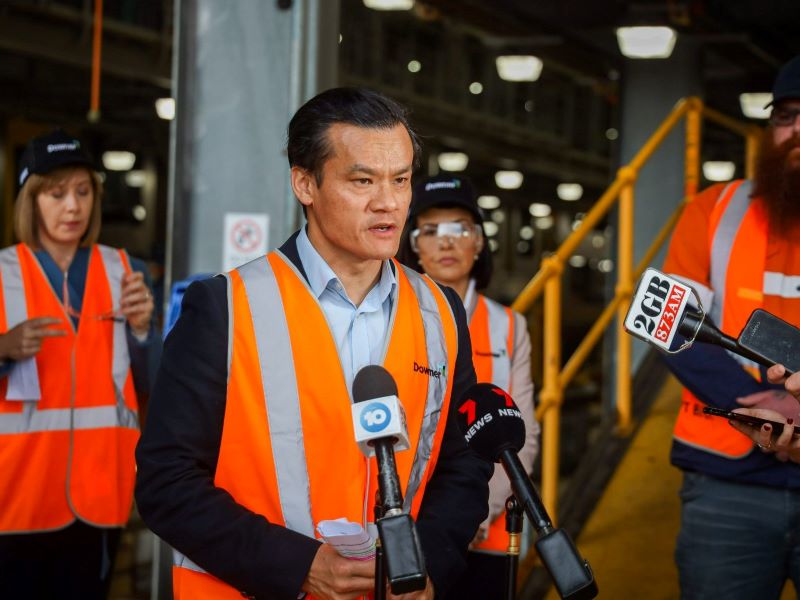The New South Wales government is directing manufacturers to a $30 million grant program while it considers more strategic and costly policy changes, including its own network of manufacturing centres based on the successful UK Catapult model.
An interim government response to the recommendations of an expert manufacturing taskforce has been released, while a more detailed response will come as part of the state’s first Modern Manufacturing Strategy next year.
The interim response released over the weekend offers commitments for the Modern Manufacturing Commissioner to continue consulting, reviewing and analysing the state’s support for manufacturing, but stops short of endorsing the taskforce’s recommendations for significant change that would need increased resourcing.
The state Opposition has blasted the response as “more talk and no action” at a time when manufacturers are struggling.

The Modern Manufacturing Taskforce was in assembled in March and was chaired by businessman Tony Shepherd, with other members including Thales Australia chief executive Chris Jenkins, Engineers Australia chief executive Dr Bronwyn Evans, UTS special innovation adviser emeritus professor Roy Green and Cochlear chief executive Dig Howitt.
It provided its final report to government in July. The report went through Cabinet while the state’s first Modern Manufacturing Commissioner was being appointed — later revealed to be biotech executive Lisa Emmerson.
Ms Emmerson is now developing the state government’s Modern Manufacturing Strategy which will include more of the government’s response to the taskforce report.
The taskforce’s report was quietly released over the weekend. It warns the state’s declining manufacturing results come from “a failure of successive governments at all levels” and recommended a “costly” suite of initiatives to catch up.
The taskforce compares the opportunity of the current post pandemic period to that of the years following the Second World War, when Australia invested in growing its industrial, R&D and infrastructure base.
A similar tilt now would help the state develop modern manufacturing capabilities that deliver “specialised, niche capabilities and products that have a global market demand” in areas like quantum computing, medtech, biotech, agritech, and green steel technology.
The taskforce recommends the new shared use Advanced Manufacturing Research Facility (AMRF) initiative be broadened around the state with a series of “Manufacturing Capability Centres” along the lines of the successful UK Catapult model.
This would see at least six new facilities in places like Newcastle and Wollongong follow the Bradfield based AMRF, helping to support and coordinate the state’s manufacturers and promote as well as promote advanced technologies to them.
The government response notes the AMRF, expected to be operational in 2026, will serve as a “pilot model” for a potential-Catapult like network in New South Wales. It commits the new Commissioner to more consultation with regional hubs, local government, and the Department of Regional NSW on the prospect.
But there is nothing in the way of dedicated funding or any firm commitment to actually deploy the model.
The interim response gives similar commitments to continuing to promote modern manufacturing, review current approaches to procurement and direct industry support programs, and develop new self-assessment tools for industry.
This will happen as the Modern Manufacturing Commissioner develops a formal strategy to be released “in 2023”, which the government says will include more of its response.
NSW shadow minister for industry and trade, Anoulack Chanthivong, blasted the “lacklustre” interim government response on Tuesday, describing it as “more talk and no action”.
“After a decade of missed opportunities and nearly 50,000 manufacturing jobs lost in NSW, the manufacturing industry needs action, now,” he told InnovationAus.com.
“What they got is the government saying it will review the status quo, with game-changing initiatives falling by the wayside.”
In releasing the interim response over the weekend, Innovation minister Alister Henskens touted a new $30 million “Future Industries Investment” grant program as another part of the response to the taskforce.
The fund will open this week to help “innovative, high-growth businesses in priority industries” and “high-value technologies” like digital technology, medical technology and the clean economy with uncapped grants for up to 50 per cent of a project’s value.
The taskforce had pushed public procurement as a “better” innovation lever than grants, and recommended existing programs be reviewed and consolidated where possible.
“Local procurement and co-investment from government, in the place of grants, can reduce risk to government, instil confidence in business, provide business with a highly respected customer, and stimulate local innovation — including for government solutions,” the report said.
Mr Henskens defended the government’s response to the taskforce recommendations and said more action will come next year.
“The interim government response outlines what action we are already taking and what we are committed to delivering on, ahead of a more detailed response in the new Modern Manufacturing Strategy being compiled by our Modern Manufacturing Commissioner, Lisa Emerson, for release in 2023,” Mr Henskens told InnovationAus.com.
“The Future Industries Investment Program is a new $30 million investment attraction program to accelerate industry growth, create jobs and increase global competitiveness in priority industries, technologies and focus precincts identified in the NSW Industry Development Framework, including advanced manufacturing.”
Do you know more? Contact James Riley via Email.

